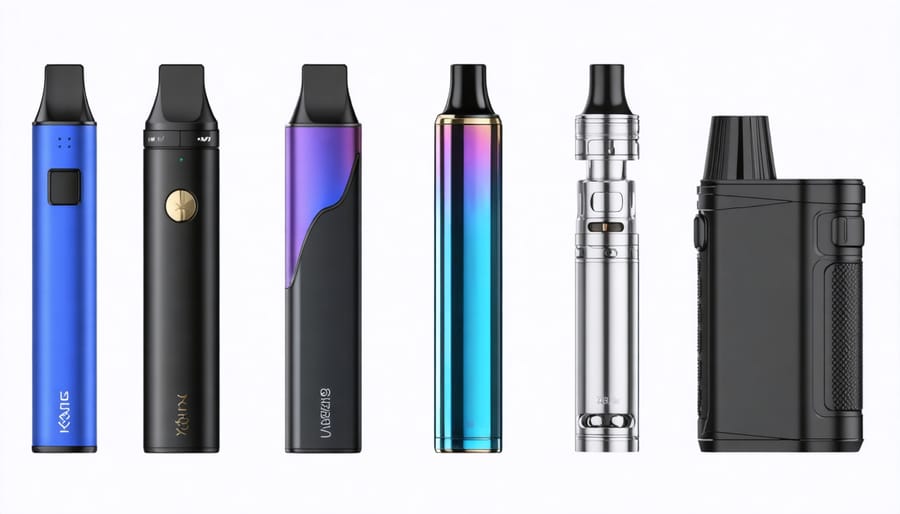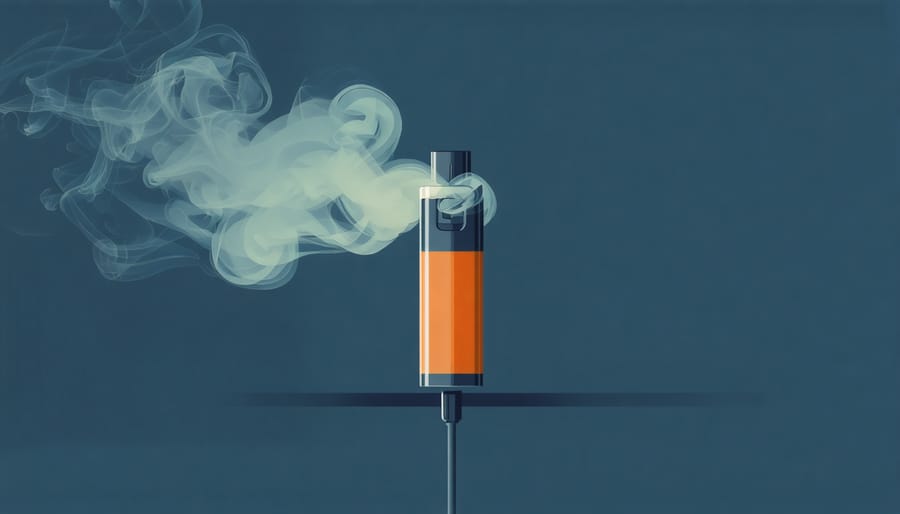Select a reputable vendor, like visiting a vape shop terrebonne ouest, to ensure high-quality devices and e-liquids. Prioritize devices with built-in safety features such as overcharge protection and temperature control to prevent malfunctions. Regularly clean and maintain your device by following manufacturer guidelines to enhance longevity and safety. Stay informed about the latest regulatory updates in vaping, ensuring compliance with legal standards and reducing health risks.
Vaping devices come in various forms, each catering to different preferences and experience levels. Vape pens are popular among beginners for their simplicity and portability. They usually consist of a battery and a tank, offering an easy entry into vaping. Advanced users often gravitate towards box mods, which provide greater control over power settings, delivering enhanced vapor production and flavor. These devices are bulkier but allow for customization to suit individual tastes. Pod systems offer a middle ground, combining convenience with a compact design and often using pre-filled or refillable pods.
The choice of device can influence the vaping experience, with preferences often evolving as vapers become more experienced. Understanding the differences between these devices, including accessories like vape carts, helps users make informed decisions. As vaping technology progresses, staying informed about the latest trends ensures a safer and more enjoyable experience.

When selecting a vaping device, prioritizing safety features is crucial for both beginners and seasoned users. Start by ensuring the device includes overcharge protection, which prevents the battery from receiving excessive power, reducing the risk of overheating and explosions. Another vital feature is short-circuit protection; this stops the device from operating if a short circuit is detected, safeguarding users from potential electrical hazards. Temperature control is equally important, allowing users to manage the heat level, which can prevent the coil from overheating and producing harmful substances. Additionally, look for devices with a battery venting system designed to release pressure safely if the battery overheats, thus minimizing the risk of accidents. Locking mechanisms that prevent accidental firing can also enhance safety, particularly when carrying the device in a pocket or bag. Finally, ensure the device has a clearly marked power button or timer to avoid unintentional activation, providing an extra layer of security.
When using vaping devices, prioritizing safety is essential to ensure a positive experience. Begin by choosing a reputable device and reading the manufacturer’s instructions thoroughly. Understanding how to assemble and operate your device reduces the risk of accidents. For proper inhalation, take slow, steady puffs rather than deep, rapid breaths. This technique helps prevent irritation and allows you to better appreciate the flavors and effects of vaping.
Regarding usage frequency, moderation is key. Avoid continuous or excessive vaping, which can lead to overconsumption and potential nicotine dependence if using nicotine-based e-liquids. Regularly clean your device to maintain optimal performance and hygiene. Replace coils and refill tanks as advised by the manufacturer, ensuring you use compatible parts only. Be cautious about battery safety; use the correct charger and avoid overcharging to prevent battery failure. Lastly, always stay informed about updates in vaping regulations and product safety recalls to ensure you are using compliant and safer devices.
Maintaining and caring for vaping devices is crucial to ensuring their safe and effective operation. Proper maintenance not only extends the life of your device but also helps in preventing common issues that might pose risks. Start by regularly cleaning your device to avoid residue buildup. Disassemble the device according to the manufacturer’s instructions, and use a soft cloth or brush to clean the components, especially the tank, mouthpiece, and battery connections. Avoid using water directly on electronic parts to prevent damage.
Battery care is another essential aspect of device maintenance. Always use the charger recommended by the device manufacturer and avoid overcharging, which can lead to battery degradation or even failure. Store batteries in a cool, dry place and check them regularly for signs of damage, such as dents or leaks. Replace damaged batteries immediately to reduce the risk of accidents.
Coil replacement is necessary for optimal vaping performance. Depending on your usage, coils should typically be changed every 1-4 weeks. A worn-out coil can lead to burnt tastes and may release harmful substances if neglected. Finally, stay informed about device upgrades and recalls by following the manufacturer or trusted industry sources. This proactive approach ensures that your vaping experience remains both enjoyable and safe.
When it comes to vaping, recognizing poor quality products is crucial for safety. Inferior or counterfeit devices often mimic high-end brands but cut corners on quality and safety standards. Look for inconsistencies in packaging, such as misspellings or atypical logos, as these can be red flags. Authentic products will always have a verifiable serial number or QR code that you can check on the manufacturer’s website. Another indicator of poor quality can be the price; if it’s significantly cheaper than known market rates, it’s likely too good to be true. Additionally, examine the physical components: authentic devices and e-liquids are made of durable and safe materials. Poor manufacturing can lead to leaks, overheating, or device failure. Always purchase from reputable retailers to ensure authenticity. Staying informed about current trends and regulatory updates can also help you identify safe, reliable products and avoid potential hazards.
When it comes to vaping, one of the most crucial aspects for users is understanding battery safety. Ensuring the safe use of vape batteries is essential to avoid potential hazards like overheating or explosions. Always use the charger provided by the manufacturer and avoid overcharging by removing the battery promptly once fully charged. Store your batteries in a cool, dry place and use a protective case to prevent accidental contact with metal objects, which could cause short-circuiting.
For those who frequently travel with vape devices, remember to keep spare batteries in your carry-on, as temperature fluctuations in cargo holds can be unsafe. Regularly inspect your batteries for any signs of damage, such as dents or peeling wraps, and replace them immediately if found compromised. By following these guidelines, you can greatly minimize risks and ensure a safe vaping experience, whether you are a novice or seasoned enthusiast.

Vaping regulations vary widely across different regions, impacting both the safety and availability of products. In many countries, regulations focus on product standards, age restrictions, marketing, and nicotine limits to ensure consumer safety. For instance, the European Union’s TPD mandates a maximum nicotine concentration and device capacity, fostering a safer vaping environment. Meanwhile, the United States sees diverse state-specific laws alongside federal oversight. Canada’s recent changes also highlight the role of nicotine caps in enhancing safety, as seen in their new vaping regulations. Adhering to these regulations can minimize risks associated with counterfeit or substandard products, making awareness crucial for vapers worldwide.
Vaping, while often considered a safer alternative to smoking, still poses health risks that users should be aware of. Recent studies indicate potential lung and cardiovascular effects, emphasizing the importance of informed choices. Users should stay updated on research findings to understand these risks and make educated decisions about their vaping habits. Additionally, selecting high-quality devices with safety features can mitigate certain hazards. Prioritize devices that comply with regulatory standards to ensure they have undergone safety assessments. Being proactive about maintenance and proper usage reduces dangers like malfunction or exposure to harmful substances, reinforcing the importance of informed and responsible vaping practices.
In conclusion, adopting safe vaping practices is crucial for both newcomers and seasoned users. Understanding the variety of devices available, from mods to pod systems, and their respective safety features can significantly reduce risks. Regular maintenance and awareness of potential hazards, such as e-liquid spills and battery malfunctions, are essential for a secure vaping experience. Staying informed about current trends and abiding by regulatory guidelines also plays a vital role in maintaining safety. By engaging responsibly and making informed choices, vapers can enjoy the experience while prioritizing their well-being. Prioritize safety, stay informed, and always use devices as intended to mitigate risks effectively.